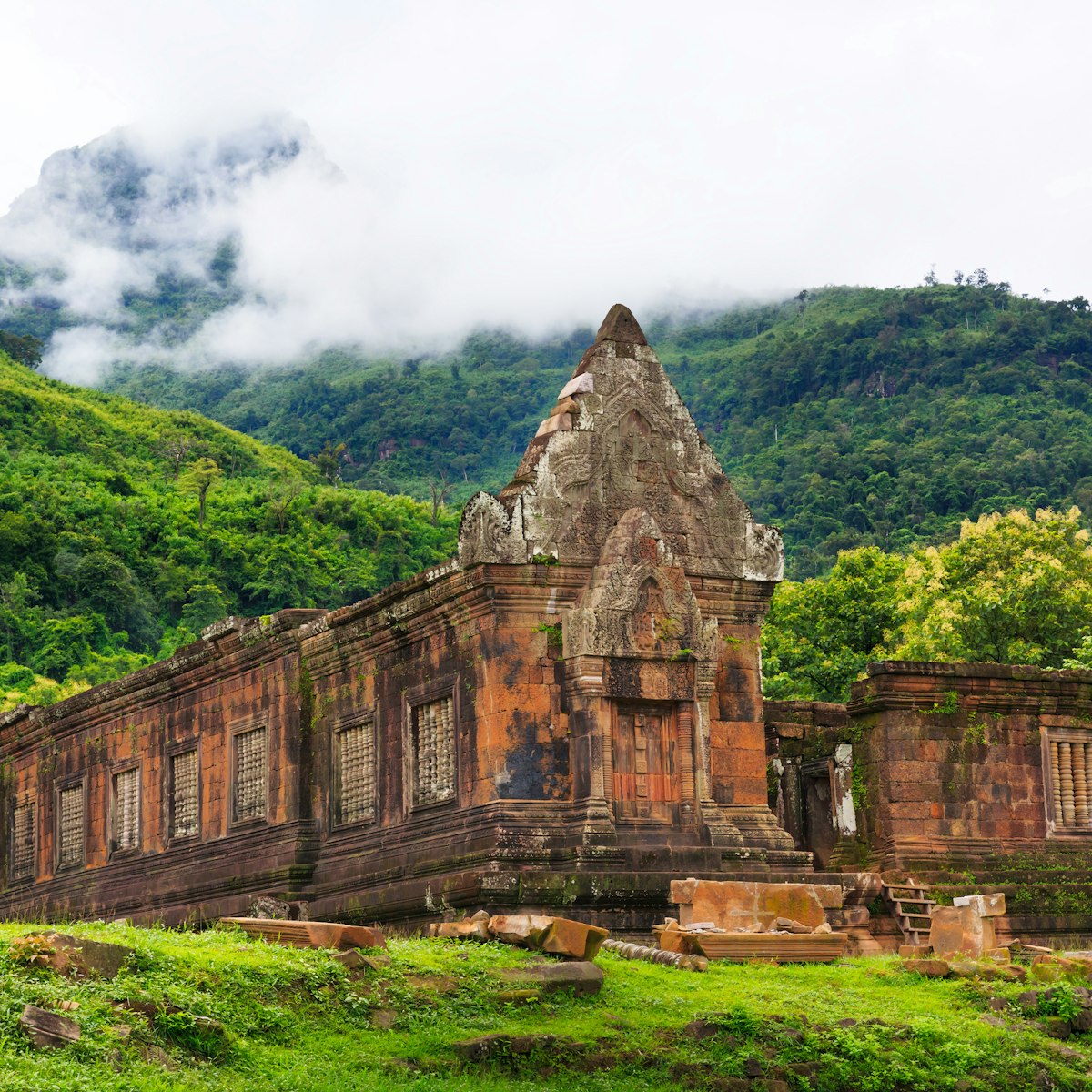The Khmer temple ruin of Uo Moung, beside a small tributary of the Mekong, is believed to have been built late in the 9th century during the reign of the Khmer king Yasovarman I. Its exact function is unknown, though its orientation suggests its location was somehow related to Wat Phu Champasak, and thus it's included as part of the Wat Phu World Heritage Site, even though it sits on the east side of the river.
The ruins include an entranceway bordered by lotus-bud carvings, like those found at Wat Phu, and two crumbling gopura (ornate entranceways), one still partially standing. Several lintels and other sandstone carvings are displayed on rocks beneath towering dipterocarp trees, but the best art from this site is in the Wat Phu Exhibition Hall, including an unusual lingam-style stone post on which two faces have been carved. It's unusual because mukhalinga usually have four mukha (faces), while most ordinary lingam have no face at all. The white building at the heart of the site houses a bronze Sukhothai-style Buddha.
Uo Moung is 45km from Pakse. The signed turn-off along Rte 13 is just past the Huay Tomo bridge next to a market where you can look for săhm-lór or tuk-tuk if you are travelling by public transport and don't want to walk the 4.5km to the site. It's not worth a trip for everyone, but the forest and excessive moss do give it a 'lost' feeling.
You can also visit Uo Moung by boat from Don Daeng or Champasak on the opposite bank of the Mekong. From Champasak, you're looking at about 400,000K return to charter a boat, including waiting time of an hour or so, to the nearby village of Ban Tomo. The price will be about 60,000K or so return from Ban Sisouk at the south end of Don Daeng, although keep in mind that there is a small possibility that no boats will be available.
A good full-day option is to rent a bicycle in Champasak and take a boat first to Don Daeng, then to Ban Tomo, then cross the river back to the western shore (also about 60,000K) and ride back to Champasak.

